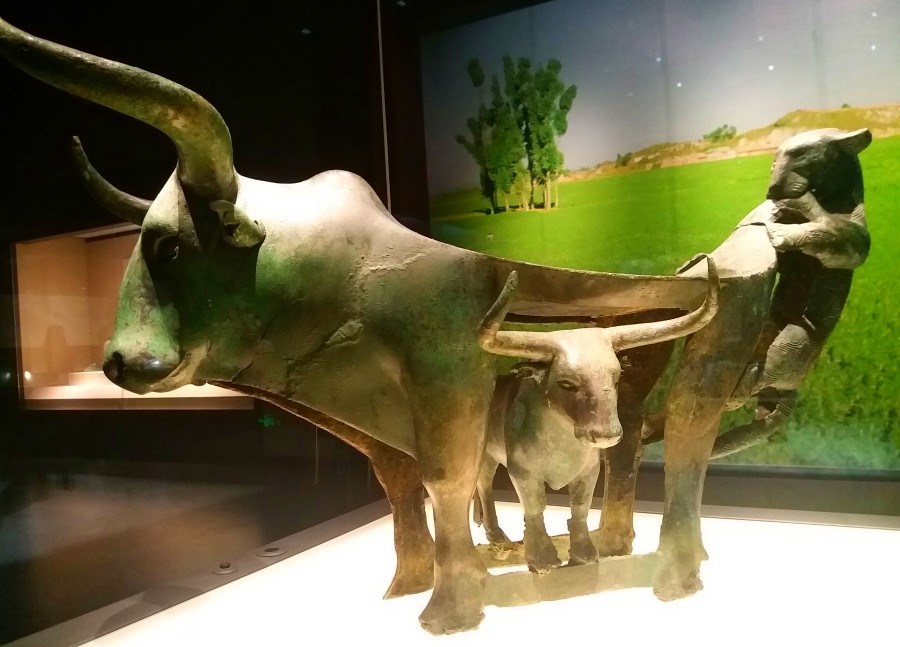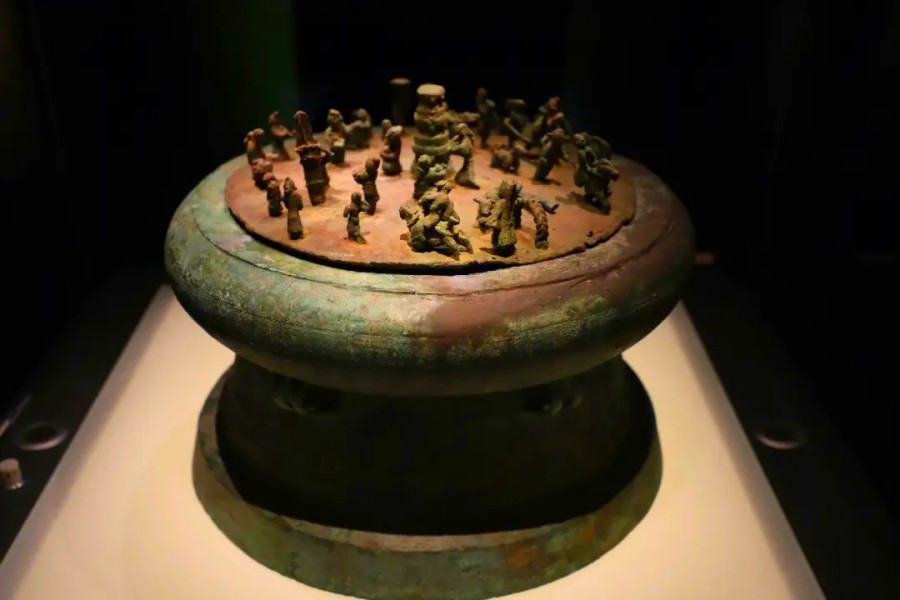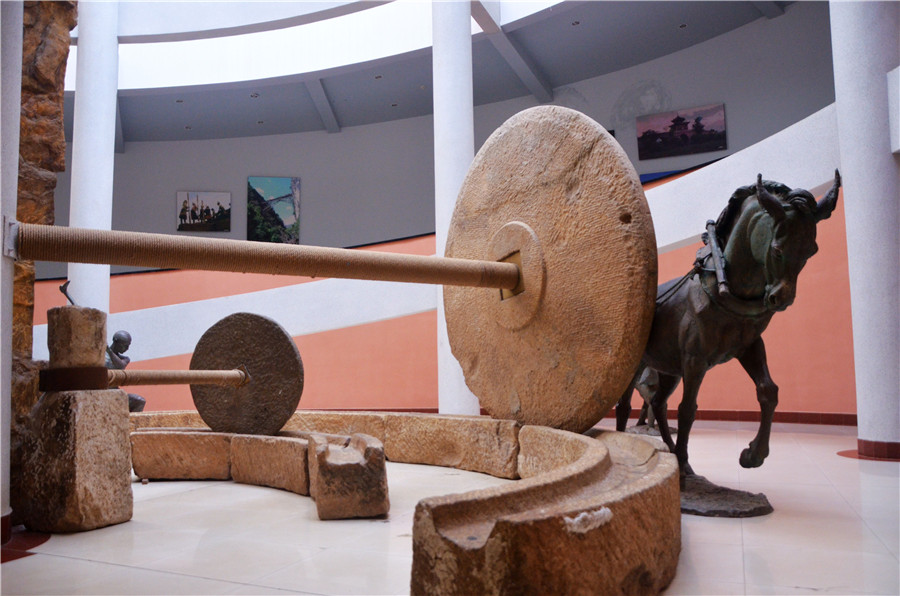
Early History of Yunnan
Yunnan (云南), located in southwestern China, has a history that stretches back thousands of years, shaped by its rich geography, diverse ethnic groups, and significant role as a cultural and trade crossroads. The province’s early history reveals a blend of indigenous civilizations, foreign influence, and strategic importance in both regional and global contexts.
Ancient Kingdoms and Early Civilizations
Early Settlements and Paleolithic Period
Yunnan has been inhabited since the Paleolithic era, with evidence of human activity dating back to approximately 30,000 – 10,000 years ago. Early humans lived along fertile riverbanks, particularly near the Dianchi Lake (滇池), which provided ample resources for agriculture and trade. Archaeological findings, including stone tools, pottery, and early human remains, show that early settlers lived in the region for thousands of years.
The Rise of the Dian Kingdom (circa 2000 – 1000 BCE)
The Dian Kingdom (滇王国) emerged during the Bronze Age and flourished around the Dianchi Lake in central Yunnan. Known for its advanced bronze casting techniques, the Dian culture left behind significant archaeological evidence, including large bronze vessels and intricate pottery. This kingdom was a key player in early trade, establishing connections with other regions in China and beyond.
The Dian Kingdom is particularly notable for its early urbanization and its role in shaping the development of Yunnan’s agriculture, particularly rice cultivation. In 109 BCE, the Han Dynasty (汉朝) conquered the Dian Kingdom, incorporating it into the broader Chinese empire.

Influence of Chinese Dynasties
Han Dynasty (206 BCE – 220 CE)
During the Han Dynasty, Yunnan was incorporated into the Han Empire, marking the beginning of significant Chinese influence in the region. The Han Emperor Wu (汉武帝) annexed the Dian Kingdom and established the Yizhou Commandery (益州), a military and administrative division that governed the region. This marked the start of Yunnan’s role as a strategic frontier for the Han Empire, and it became a critical point along the Southern Silk Road (南方丝绸之路), which facilitated trade and cultural exchange with Southeast Asia.
Tang Dynasty (618 – 907 CE)
The Tang Dynasty further strengthened Chinese control over Yunnan, establishing military outposts and fortifications along key trade routes. During this period, Buddhism spread into Yunnan, influencing local religious practices and establishing a foundation for the widespread adoption of Buddhism in the region.
Yunnan also benefited from cultural exchanges with the Tang Dynasty, particularly in the realms of art, literature, and technology. The region’s strategic importance as a transit point for trade with Southeast Asia was further solidified.
Nanzhao and Dali Kingdoms
Nanzhao Kingdom (7th – 9th Century)
In the 8th century, the Nanzhao Kingdom (南诏国) emerged in the northwestern part of Yunnan, centered around the city of Dali (大理). Nanzhao quickly became a powerful regional force, expanding its influence over neighboring areas, including parts of modern-day Burma (Myanmar) and Laos. Nanzhao’s military and political power allowed it to maintain relations with both the Tang Dynasty and other states in Southeast Asia.
The Nanzhao Kingdom played a crucial role in the region’s political dynamics, particularly in controlling trade routes and facilitating cultural exchanges between China and Southeast Asia. The kingdom also promoted the development of Buddhism and Taoism in the region.
Dali Kingdom (937 – 1253)
After the decline of Nanzhao, the Dali Kingdom (大理国) was established in 937 CE. Dali became a major political, economic, and cultural center in Yunnan, known for its religious tolerance and flourishing trade. The Dali Kingdom maintained diplomatic relations with neighboring kingdoms and states, including Tibet, Burma, and Southeast Asia.
Under the Dali Kingdom, Yunnan continued to prosper, with a strong emphasis on Buddhism and the arts. The kingdom’s influence extended well into the Ming Dynasty period, even after the Dali Kingdom’s collapse in 1253.

Mongol and Ming Dynasty Rule
Yuan Dynasty (1271 – 1368)
In the late 13th century, Yunnan fell under the control of the Mongols (元朝) as part of the Yuan Dynasty’s expansion into China. Under Mongol rule, the region was incorporated into the vast Mongol Empire, and military garrisons were established to enforce control. Despite this, Yunnan continued to maintain its importance as a trading hub, especially in the context of the Mongol Empire’s connections with Central Asia, Southeast Asia, and the Middle East.
Ming Dynasty (1368 – 1644)
During the Ming Dynasty, Yunnan was formally established as a province and became a key region for Chinese defense and expansion. The Ming emperors fortified the province’s borders, particularly against threats from Burma (Myanmar) and Tibet. The Ming government also promoted economic development, focusing on agriculture, mining, and infrastructure.
Yunnan’s strategic position allowed it to become a key trading center for goods flowing between China and Southeast Asia. The region continued to benefit from cultural exchanges, and its economy grew as it became more integrated into the larger Ming economy.
Qing Dynasty and Modernization
Qing Dynasty (1644 – 1912)
The Qing Dynasty (清朝) extended its control over Yunnan in the 17th century, continuing the policies of military consolidation and economic development. During this period, the Qing government promoted agriculture, infrastructure, and the mining of valuable resources such as tin and silver.
Yunnan also experienced increased contact with Western powers, particularly in the late Qing period. However, the province also faced internal challenges, including uprisings and rebellions, such as the Panthay Rebellion (1856-1873), which was led by Muslim rebels against Qing authority.
Late Qing and Republic of China Period
By the late Qing period, Yunnan had become a politically unstable region, affected by both internal rebellions and external pressures from Western imperial powers. However, following the fall of the Qing Dynasty, the region became part of the newly established Republic of China (中华民国) in 1912.
20th Century and Communist Era
Republic of China and Communist Takeover
In the 20th century, Yunnan underwent significant changes with the establishment of the Republic of China (中华民国) in 1912. The province experienced political instability during this time, with warlords and revolutionary movements vying for control. After the establishment of the People’s Republic of China (中华人民共和国) in 1949, Yunnan became an integral part of the new Communist state.
The Communist Party of China (中国共产党) emphasized economic development in Yunnan, focusing on agriculture, infrastructure, and the development of trade routes with neighboring Southeast Asian countries.

 7 Days GolfingTour
7 Days GolfingTour
 8 Days Group Tour
8 Days Group Tour
 8 Days Yunnan Tour
8 Days Yunnan Tour
 7 Days Shangri La Hiking
7 Days Shangri La Hiking
 11 Days Yunnan Tour
11 Days Yunnan Tour
 6 Days Yuanyang Terraces
6 Days Yuanyang Terraces
 11 Days Yunnan Tour
11 Days Yunnan Tour
 8 Days South Yunnan
8 Days South Yunnan
 7 Days Tea Tour
7 Days Tea Tour
 8 Days Muslim Tour
8 Days Muslim Tour
 12 Days Self-Driving
12 Days Self-Driving
 4 Days Haba Climbing
4 Days Haba Climbing
 Tiger Leaping Gorge
Tiger Leaping Gorge
 Stone Forest
Stone Forest
 Yunnan-Tibet
Yunnan-Tibet
 Hani Rice Terraces
Hani Rice Terraces
 Kunming
Kunming
 Lijiang
Lijiang
 Shangri-la
Shangri-la
 Dali
Dali
 XishuangBanna
XishuangBanna
 Honghe
Honghe
 Kunming
Kunming
 Lijiang
Lijiang
 Shangri-la
Shangri-la
 Yuanyang Rice Terraces
Yuanyang Rice Terraces
 Nujiang
Nujiang
 XishuangBanna
XishuangBanna
 Spring City Golf
Spring City Golf
 Snow Mountain Golf
Snow Mountain Golf
 Stone Mountain Golf
Stone Mountain Golf












